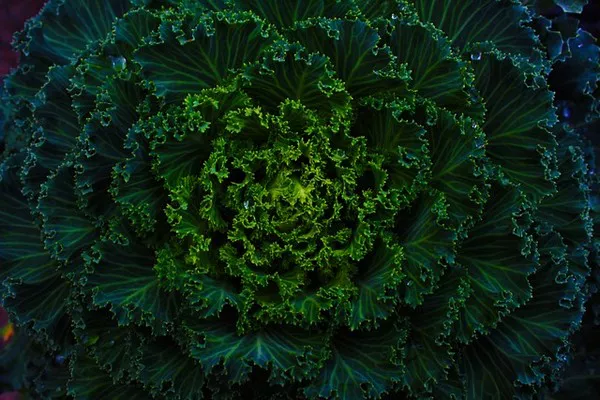Succulents have gained immense popularity in recent years, thanks to their unique beauty, low maintenance requirements, and the ability to propagate them from leaves. Propagating succulents from leaves is a rewarding and cost-effective way to expand your succulent collection or share these charming plants with friends and family. In this comprehensive guide, we will explore the step-by-step process of planting succulent leaves and nurturing them into healthy, thriving plants.
Choosing the Right Leaves
Before you start propagating succulents, it’s essential to select the right leaves for the job. Healthy, plump leaves from mature succulent plants work best for propagation. Here are some key considerations when choosing leaves:
Healthy Leaves: Look for leaves that are free from damage, pests, or diseases. Avoid leaves with spots, scars, or signs of rot.
Mature Leaves: Succulent leaves that are fully developed and firm are more likely to produce successful propagations. Avoid using baby or immature leaves.
Leaf Shape: Different succulent species have varying leaf shapes and sizes. While most succulents can be propagated from leaves, some may be more challenging than others. Experimentation can help you determine which leaves work best for your specific succulent species.
Leaf Pluck: Gently pluck the leaves from the mother plant. Use a clean pair of scissors or pruning shears to ensure a clean cut, leaving a short stem attached to the leaf. This stem will be essential for successful propagation.
Preparing the Leaves
Once you’ve selected the right leaves, the next step is to prepare them for planting. Proper preparation can significantly increase your chances of success. Here’s how to do it:
Let Them Callus: Allow the cut end of each leaf to air dry and callus over for a few days. This step is crucial as it helps prevent rotting when the leaf is planted in soil. Place the leaves in a dry, shaded area with good air circulation to facilitate the callusing process.
Choosing the Right Soil: Select a well-draining succulent potting mix or prepare one by mixing regular potting soil with perlite or sand. The ideal soil should be light and porous, allowing excess moisture to drain away quickly.
Planting the Leaves
With your succulent leaves prepared, it’s time to plant them and begin the propagation process. Follow these steps for successful planting:
Choose the Right Container: Select a shallow container or tray with drainage holes to plant your succulent leaves. The container should be wide enough to accommodate the leaves without crowding.
Planting Depth: Insert the callused end of each leaf into the soil, burying it about half an inch to an inch deep. The stem portion of the leaf should be in contact with the soil while the leaf itself remains above ground.
Spacing: Ensure that there is enough space between each leaf to allow for proper air circulation. Overcrowding can lead to mold and rot issues.
Watering: Water the planted leaves lightly using a spray bottle or a gentle stream of water. Be careful not to saturate the soil, as excess moisture can lead to rot. Water sparingly, keeping the soil consistently moist but not wet.
Nurturing Your Succulent Leaf Cuttings
Now that your succulent leaves are planted, it’s crucial to provide the right care and conditions for successful propagation. Here are some essential tips to help you nurture your succulent leaf cuttings:
Indirect Sunlight: Place the container with your planted leaves in a location that receives bright, indirect sunlight. Avoid exposing them to harsh, direct sunlight, as this can scorch the leaves or cause them to dry out too quickly.
Maintain Consistent Moisture: Check the soil regularly and water when it begins to dry out. Succulent leaves need consistent moisture to encourage root development, but they are susceptible to rot if kept too wet. A spray bottle can help you provide targeted, controlled moisture.
Patience is Key: Succulent leaf propagation takes time, and it may be several weeks or even months before you see significant growth. Be patient and resist the urge to overwater or disturb the leaves during this period.
Transplanting: Once your succulent leaf cuttings have developed roots and tiny rosettes of new growth, you can consider transplanting them into individual pots. Use the same well-draining succulent soil mix and care for them as you would mature succulents.
Common Challenges and Solutions
While propagating succulents from leaves can be a straightforward process, there are some common challenges you may encounter:
Leaf Rot: If you notice that the leaves are becoming mushy or discolored, they may be experiencing rot. Remove affected leaves promptly and adjust your watering routine to avoid overwatering.
Lack of Growth: Sometimes, leaf cuttings take longer than expected to produce new growth. Ensure they are receiving enough light and continue to provide consistent moisture without overwatering.
Pests: Keep an eye out for common succulent pests like mealybugs and aphids. Treat infestations promptly with neem oil or insecticidal soap.
Conclusion
Propagating succulents from leaves is a satisfying and cost-effective way to expand your succulent collection or share these charming plants with others. By choosing the right leaves, preparing them properly, and providing the right care and conditions, you can enjoy the journey of watching your succulent leaf cuttings develop into healthy, thriving plants. With patience and a little care, you’ll soon have a beautiful assortment of succulents to enhance your indoor or outdoor garden.


